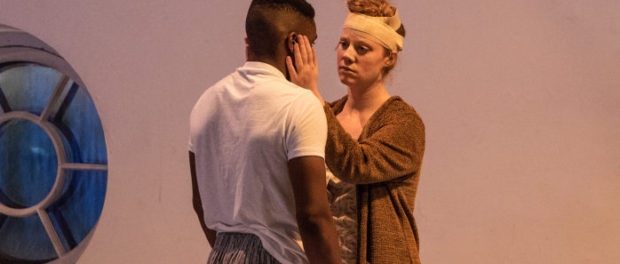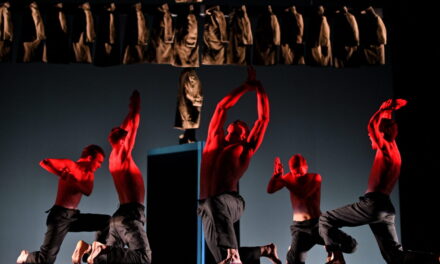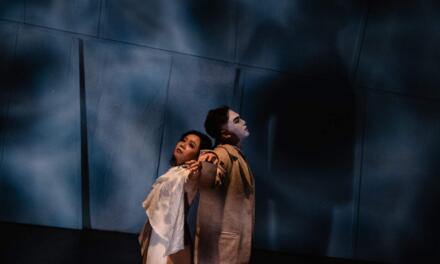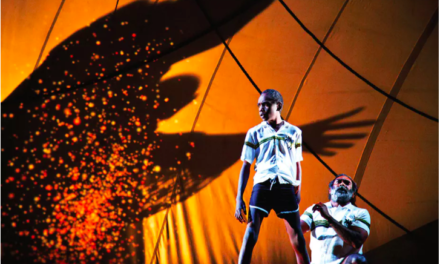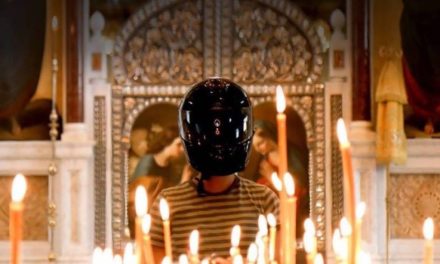Montreal, Québec
Willow White reviews Odd Stumble’s workshop presentation of Erin Lindsay’s new play The Hysteria Triptych:
The Hysteria Triptych opens with a woman (Jaqueline van de Geer) putting on makeup in a mirror. She touches her face, pulls her skin taught along her neck, and shuffles makeup in her drawer. She scowls at the lines on her forehead and glares at the audience though her mirror. As she pulls on fishnet stockings and a red dress over lacy black underwear, she rages at a lifetime of being hyper-sexualized and misunderstood. Her anger erupts into rants at the men who have hurt her, abused her, and abandoned her: “You don’t own my pussy!” she screams as she slurps back glass after glass of water as if that will somehow satiate her anger.
In The Hysteria Triptych, director Cristina Cugliandro ushers her audience into the lives of three women who share their frustrations, regrets, and dreams in the form of poetic vignettes. The three-part framework is inspired by the tradition of triptych paintings—a form of displaying art that groups three paintings connected by hinges.
“I wanted to play with the limits of structure and form as they relate to storytelling,” playwright Erin Lindsay tells me in an email. She was inspired to “create a piece linked by theme, texture, style, and quality rather than by linear narrative.”
While each vignette differs in terms of form, the women’s experiences are tethered together by similar themes of gendered subjugation, unfulfilled desire, and accusations of hysteria.
This workshop performance takes place in the exposed Rialto Theatre Studio in Montreal. The set by Diane Urbibe is minimalist, but the few props—a dresser, a tub of water, a platform—become anchors for each woman’s story. Natural light (lighting design by Jody Burkholder) streams through the windows, conveying a sense of intimacy and realism. The ethereal and eerie soundscape by Joel Gorrie and Zachary Smith is especially noteworthy: reminiscent of the experimental music of Brian Eno, the ambient sounds of soft breathing and dripping water add a haunting tone to the performance.
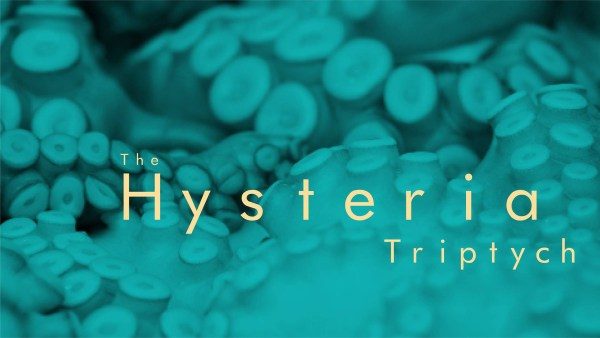
In the second part of the production, another woman (Kathleen Stavert) sits with her feet in the tub, a bandage wrapped around her head. We learn that she is recovering from brain surgery meant to cure her life-long struggle with mental illness—what she refers to as a modern-day lobotomy. In a flashback, her husband (Patrick Abellard) assures her the surgery is safe and that it may help her be a better mother to their unborn child. But the surgery is a failure, leaving the woman confused, disoriented, and scared. The woman’s pained efforts to make herself whole again call to mind the long history of women receiving misguided and heavy-handed medical interventions—ranging from Freudian psychotherapy, strong medications, and electro-shock therapy—in order to treat their perceived hysteria.
The final act is the most abstract of the three. Dressed completely in white, a woman (Dayane Ntibarikure) describes receiving cunnilingus in the bathtub. She revels in the pleasure, but her orgasm transcends into chilling visions of earth, blood, fire, and empowerment. This character “appropriates hysteria,” says Lindsay. Incorporating her body into the poem, she uses her arms and hands to describe a sense of strength and liberation.
“Through her journey, she is able to glimpse the possibility of the world coming to a more healed place,” Lindsay continues. “The experience of the ownership over her own body allows her to transcend and transform herself–if only for an instant.”
The Hysteria Triptych offers few happy notes. Rather, it is a raw feminist scream (literally) at the patriarchy. This is a performance for every woman who has ever needed to let loose rage, grief, and laughter–if only for an instant. I am eager to see how Lindsay and Cugliandro continue to develop this powerful and haunting performance in the future.
For more information about upcoming performances visit www.oddstumble.com
This article originally appeared in AltTheatre on June 15, 2018, and has been reposted with permission.
This post was written by the author in their personal capacity.The opinions expressed in this article are the author’s own and do not reflect the view of The Theatre Times, their staff or collaborators.
This post was written by Willow White.
The views expressed here belong to the author and do not necessarily reflect our views and opinions.

